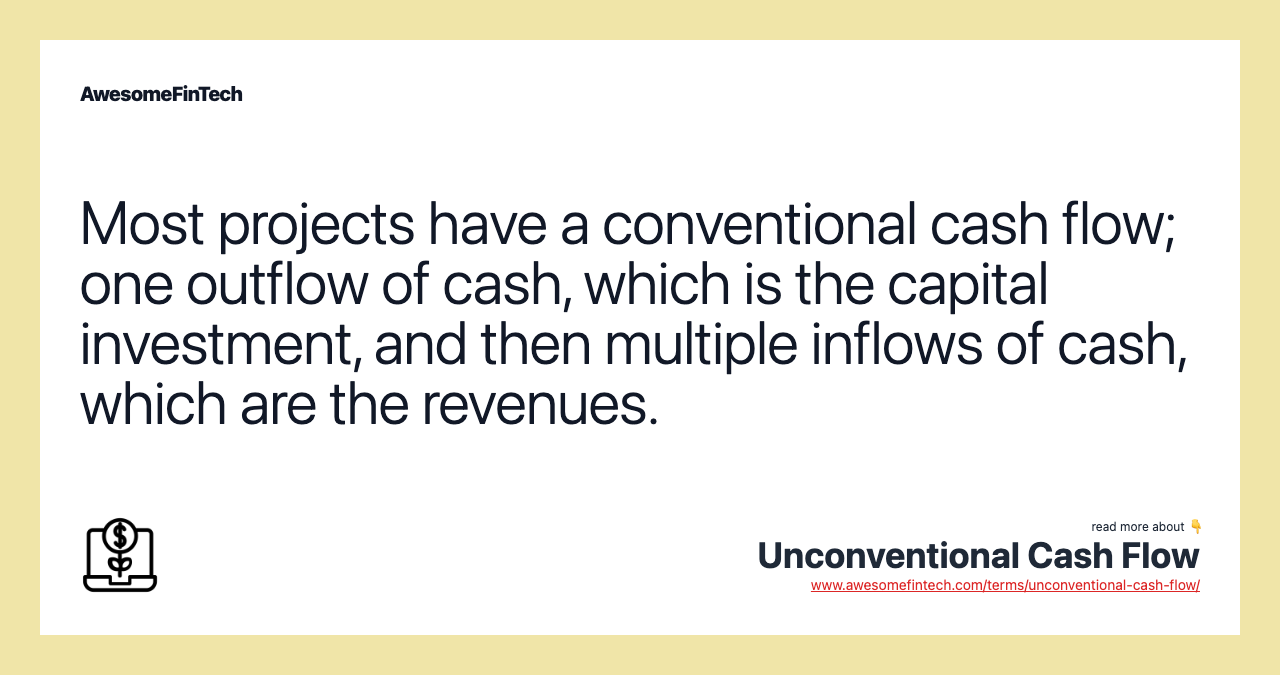
Again, cash flow simply describes the flow of cash into and out of a company. Profit is the amount of money the company has left after subtracting its expenses from its revenues. Cash flow from financing activities provides investors with insight into a company’s financial strength and how well its capital structure is managed. Negative cash flow from investing activities might be due to significant amounts of cash being invested in the company, such as research and development (R&D), and is not always a warning sign. It is calculated by taking cash received from sales and subtracting operating expenses that were paid in cash for the period. To understand the basics of cash flow, dive into the section ‘Understanding the Basics of Cash Flow’ with its sub-sections ‘Definition of Cash Flow’ and ‘Importance of Cash Flow in Financial Analysis’.
PV Calculation Examples
The conventional cash flow method is often used, but it has limitations and difficulties. It doesn’t capture the dynamic nature of cash flows and relies too much on past data to predict future ones. Plus, it doesn’t take into account the timing of cash flows, making it hard to assess an investment’s real value.
Advantages and Limitations of Conventional Cash Flow Analysis
The following cash flow formulas each have their own benefits and tell you different things about your business.Let’s go over definitions, calculations, and examples together. To make things extra easy, you can use our free cash flow calculator to follow along. We can see that project B has a unique and positive MIRR, which is higher than the required rate of return of 10%, meaning that it is also acceptable and profitable. However, project A still has a higher MIRR than project B, meaning that it is more preferable. Assuming a required rate of return of 10%, we can see that project A has a higher NPV than project B, and both projects have positive NPVs, meaning that they are acceptable and add value to the firm. Cash flows from financing (CFF) shows the net flows of cash used to fund the company and its capital.
Conventional Cash Flow vs. Unconventional Cash Flow
For example, if the two IRRs stand at 8% and 16%, respectively, yet the hurdle rate is 12%, the management or investors will not want to undertake the project because of uncertainty. An annuity is a standard investment option in the United States, with investors mostly looking to ensure an income source after retirement. Since it is an investment, they estimate the present value of future cash flows from annuities offered by different companies to choose the best option that works for them. The first series is the conventional cash-flow pattern, which has one sign change, i.e. it has initial cash out flow followed by five continuous periods of net cash inflows. Multiple IRRs occur when a project has more than one internal rate of return. The problem arises where a project has non-normal cash flow (non-conventional cash flow pattern).
It is characterized by not just one, but several changes in the direction of the cash flow. Directional changes are usually represented by the positive (+) and negative (–) signs. The positive sign (+) denotes a cash inflow of cash, while the negative (–) sign denotes an outflow of cash.

Discuss on Steps to reduce Financial System Risk
NPV is calculated by summing the present values of all future cash flows, including inflows and outflows, and represents the net benefit of an investment or project. PV is used to evaluate and compare different investment opportunities by calculating single entry system – what is it the present value of their expected future cash flows. A single IRR can be calculated from this type of project, with the IRR compared to a company’s hurdle rate to determine the economic attractiveness of the contemplated project.
- They looked strong based on reported profits and assets but had serious debt burdens.
- This information can be of great interest to investors as an indicator of a company’s financial health, especially when combined with other data.
- It helps the company choose the best and most profitable investment among the given alternatives.
- PV is a significant concept in finance, as it helps individuals and businesses to make investment decisions by estimating the current value of future cash flows.
- Suppose a financial institution lends $300,000 to a homeowner or real estate investor at a fixed interest rate of 5% for 30 years.
Free cash flow is the money left over after a company pays for its operating expenses and any capital expenditures. Free cash flow is considered an important measure of a company’s profitability and financial health. Furthering one’s financial analysis skills is done by calculating various ratios like the operating cash flow ratio or free cash flow margin. Comparing different companies in an industry or tracking an individual company’s performance over time is possible. Internal rate of return (IRR) is one of the most commonly used capital budgeting tools.
MIRR is a modification of IRR that assumes that the cash inflows are reinvested at the required rate of return rather than the IRR. MIRR eliminates the multiple IRR problem and the scale problem that may arise with non-conventional cash flow projects or mutually exclusive projects. MIRR is always less than or equal to IRR, and it is consistent with the NPV rule. Most projects require an initial investment or expenditure, such as buying equipment, building a factory, or developing a new product, and then generate revenues or savings over time. Therefore, conventional cash flow is a realistic and common assumption for many capital budgeting decisions. Conventional cash flow is the usual pattern of in and out money in a business or investment.
To establish whether a project is likely to yield significant returns, the IRR is compared with a company’s hurdle rate. The hurdle rate is simply the lowest rate of return on an investment required by an investor. Conventional Cash Flows (CCFs) are defined as a series of inflows and outflows, with an initial outlay at the beginning followed by only cash inflows afterward. In the process, the cash flow pattern changes its direction only once and keeps proceeding in that direction.

Deje su comentario
Debe iniciar sesión para escribir un comentario.